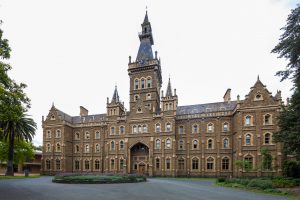
May 5, 2017
By Olivia Calver
The University of Melbourne’s prestigious student residence Ormond College considered changing student gender categories to women and non-women to be more inclusive of students who don’t identify as male or female.
Ormond College equity officer and second year student, Sam Wallace, was one of the leaders of the campaign to change the gender categories in the college’s constitution and needed 75% of the students’ vote in order to do so.
“For a couple of years there had been murmurings that there wasn’t a non-binary inclusive term in the constitution for the student representatives, last year the equity office was created and we thought we would try and do something about this,” Wallace said.
Max Mito, a first year student at Ormond, stood against the change because it eroded men’s representation in the college, which he said was an issue because men made up around 50% of the student cohort and non-binary students were estimated to make up less than 2%.
“Men had to argue why men was still an important word,” Mito said.
Mito and others suggested a third category but Wallace said people coming to terms with trans or non-binary identities might feel forced to identify in a non-binary category.
Wallace said gender was not taken out of the constitution, with just two people of any gender being representatives for groups, year levels and issues within the community.
“In the past, for example with Fresher Reps, often two guys would get it, we don’t want to go back to that – the world is still a sexist place and Ormond as subset of the world is still fairly sexist, it’s affirmative action to require one representative to be a woman,” Wallace said.
The term non-women led to so much blowback that to make sure the motion was passed the wording was changed to “there will be two positions, one of each will go to two different gender identities, one of which will be a woman,” Wallace said.
This wording was passed through a written vote over two nights, with the vote being so close on the first night that a revote was held the next night.
Mito said voting was in writing instead of the usual hand count because people did not feel comfortable voting on such an “emotive issue” in public with many people feeling afraid to go against the change.
“A lot of people weren’t happy with me and thought I was being regressive,” said Mito.
RMIT senior counsellor, Birgit Mumelter, who has worked extensively with university students, said she was concerned that the Ormond students did not have enough of an understanding of gender diversity before suggesting the change.
“I don’t speak on behalf of the trans-gender community but I think they would cringe reading the term non-women because it is still a term based on a binary structure – creating new terms that haven’t been created by the community is problematic,” Dr Mumelter said.
Transgender Victoria Director, Sally Goldner, spoke at the college, the day after the motion was passed as part of Pride Week but she was not aware of the change in constitution.
Goldner was also initially uncertain of the term non-women, but given the student representative context, said it was a fair, reasonable solution and she was impressed they were being proactive.
“Visibility is still critical for all trans, non-binary people as we still live in a binary world,” Goldner said.
Both Wallace and Mito agree the debate raised awareness in the college community about trans and non-binary identities.
